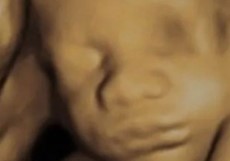07/04/2025
This World Health Day, the theme is “Healthy Beginnings, Hopeful Futures” – in view of this, I wanted to take a deep dive into an area of medical technology vital from the very beginning of a person’s life – the ultrasound.
In modern medicine, ultrasound technologies play a vital role both as a form of therapeutic medicine and in imaging to allow doctors to non-invasively view inside patients. Ultrasound technology works by generating sound waves with a frequency above that of human hearing (typically over 20 kHz). Although ultrasound technologies have been employed in medicine since the early 1940’s, this is still an exciting and active area of research, with a number of important developments having been made in recent years.
The History of Ultrasound
Ultrasound imaging methods work by generating ultrasound waves, for example using a transducer pressed against a patient’s body. The ultrasound waves travel through the patient’s body, interacting with the various different tissues and organs, before bouncing back and being received by the transducer. These detected ultrasound waves can then be used to generate an image of the patient’s body.
Ultrasound imaging can be divided into a few different types – mainly 2D, 3D, and 4D – depending on how many “dimensions” the final image displays.

2D – Developed in the 1950’s, this is the most common form of ultrasound, often seen in the “flat”, black and white image you most commonly receive when going for an ultrasound of a pregnancy.
This form of imaging allows for the general shape of the fetus to be seen, and provides enough detail for the doctor to identify things such as sex or some medical abnormalities. It is also a relatively cheap technology.
The disadvantages are that these images have very low detail – specifics such as the nose or mouth shape will not show up in these low resolution images.

3D – Developed in the 1980’s, this form of ultrasound combines a number of separate 2D images to generate a final three dimensional representation of the fetus. Whilst more complex to generate, the end result is an image with superior detail, allowing details such as nose and mouth shape to be observed.
Whilst given a different name, 4D scans amount to the same basic technology as 3D scans. The only difference is that a number of separate 3D images are combined into a video format, allowing movements of the fetus to be made out. The disadvantages of 3D and 4D ultrasound techniques are that it takes more time to generate compared to a 2D scan (as a number of 2D scans need to be obtained and combined to generate the final image) and can still result in image quality issues – due to variations in the fetus’ position, amniotic fluid, or wave paths, the final generated image or video file can have an unnatural “lumpy” look which is undesirable.
The Future of Ultrasound?
Given the issues with previous generations of ultrasound imaging technologies, there has been a desire to generate ultrasound images with the depth and ability to see features as in 3D and 4D imaging, whilst removing unwanted artifacts.
To achieve this, researchers have sought to use artificial intelligence (AI) to perform image enhancement or automated calculations – this iteration of ultrasound imaging has been coined as 5D ultrasound, or HD ultrasound. These AI improvements can include purely visual enhancements – by using AI to remove artifacts from the ultrasound scan – but also more analytical improvements – such as using AI to detect the presence of abnormalities with the mother or fetus using the ultrasound image.
Recent papers have shown that AI may provide improvements in detecting abnormalities in fetal growth, echocardiography (i.e. heart development), neurosonography (i.e. brain development), and a number of other fetal or placental abnormalities. AI improvements can enable the detection of these conditions while avoiding more invasive techniques, can allow for detection earlier, and can allow for detection even with increased user error.
Can these developments be protected with patents?
Obtaining patent protection for 5D ultrasound technologies faces some potential obstacles: diagnostic methods, mathematical models, and computer programs are not considered patentable subject matter.
However, through careful drafting and prosecution, obtaining patents for such technologies should be achievable.
EPO case law (and similar case law within the UK) indicates that a diagnostic method requires each of the following four steps:
- collection of data;
- comparison of the collected data with standard values;
- finding any significant deviation; and
- attribution to a clinical picture, i.e. a medical decision phase
By drafting any patent claim to avoid performing at least one of these steps, the exclusion can be avoided.
Furthermore, the exclusions for mathematical models and computer programs are limited to mathematical models and computer programs claimed “as such”. In other words, claiming a method involving a technical means (such as a computing device) is considered to involve a technical character, and can overcome the exclusions.
Therefore, by taking account of the particulars of European and UK patent law, patents for 5D ultrasound technologies should in theory be obtainable. It will be of interest to see how leading med-tech companies look to obtain protection of developing ultrasound technologies in the coming years.
Reddie & Grose has a wide breadth of experience in drafting and prosecuting patent applications relating to electronics, software, and medical technology related inventions. If you have products in the healthcare space, and are looking to obtain patent protection, or would like to discuss this or any of the content of this blog, please reach out to us.
This article is for general information only. Its content is not a statement of the law on any subject and does not constitute advice. Please contact Reddie & Grose LLP for advice before taking any action in reliance on it.


